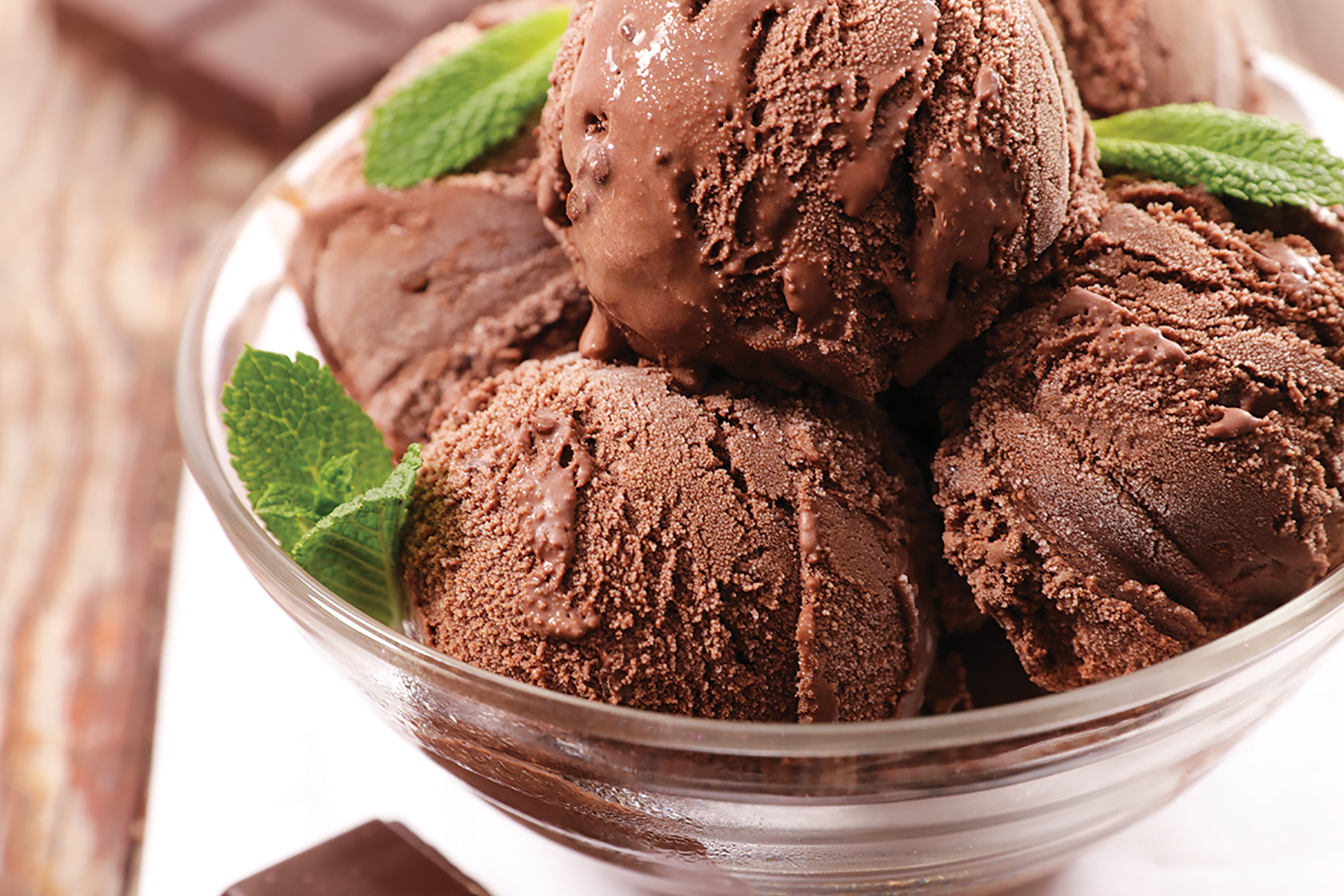Cooked In Tradition
I Scream, You Scream, We All Scream For Chocolate Ice Cream!

And we should all scream extra loud on June 7! Why? Because it’s “National Chocolate Ice Cream Day” of course! To help celebrate this glorious day honoring a favorite childhood treat (and still one of the best), I’m here armed with some chocolate ice cream history, a little science, perhaps a little trivia, and some advice for creating the perfect base for the perfect warm weather dessert.
From the beginning, starting back in the 2nd century, ice cream has been a favorite of all people. I for one have spent the past 25 years or so obsessed with it. Its beginning, however, was quite humble – simple snow topped with honey, or so “they” say, and was eaten in the Byzantine empire. (Thankfully for us ice cream lovers, numerous varieties and delicious flavors – more than 450 concocted myself – of that simple dessert have evolved since then.) It is written that in the 16th century, Marco Polo introduced it to Italy. Around the same time, England welcomed “cream ice.” And in 1550, Katherine de Medici was introduced to the delectable dish in France. And, starting in 1660, ice cream was no longer solely in the hands of the royals and the commoners were finally able to enjoy it – but only in winter!
Then, thank goodness, ice cream finally made its way to America. The first mention of it in the States was on May 12, 1777, when it was advertised in the New York Gazette that ice cream was now “available almost every day.” Making life easier for ice cream fans in 1843, Nancy Johnson invented the first hand-cranked ice cream machine.
Back to Italy … in 1692, the first recipe of chocolate ice cream was featured in The Modern Steward. That recipe was nothing like what we recognize today. The original formula was chocolate mixed with cinnamon and spice, and sometimes orange, almonds, anise, and many other spices as well. It was also made with whole cream, giving it a buttery consistency. Nowadays, ice cream producers generally use a 10%-16% butterfat base. The ice cream makers of generations past also didn’t have the luxury of modern methods of producing consistent chocolate. Today, we have beautifully crafted blended chocolates that have been formulated to be consistent and smooth. Whether you choose to work with a chocolate liquor (100% chocolate), an 80%, a 60%, or a cocoa powder, you are 100% better off than those trying to make ice cream back in 1692. Now we can get blended chocolates from all over the world – some of the best coming from Belgium, France, Switzerland, and many small chocolatiers right here in America. If you are like me and prefer a variety, try some single source chocolates from many of the central and south American countries, as well as Africa – each boasts its own qualities and difficulties of blending. Because of the difficulties of blending chocolate and cream together (as well as cost), most ice cream makers use cocoa powders. Every artisan shop prepares their chocolate ice cream distinctly, with a different chocolate variety, ratio of chocolate to cream, and amount of sugar – each trying to match their idea of the perfect chocolate ice cream.
Nowadays, chocolate is the most popular flavor in the world. Ok, that’s not exactly true … in grocery stores, vanilla outsells chocolate. But in scoop shops, chocolate takes the top spot. Overall, though, the most sold single flavor universally is cookies and cream. But if lumped into two categories, chocolate, and its varieties like cookies and cream, versus vanilla varieties, chocolate is by far the winner. Don’t believe me? Just ask your friends, your kids, your spouse … or stop by and peruse the monthly world ice cream report I get!
Now that we have gone over the history, a bit of science, and some meaningless discussion of sales trends, let’s talk about making some chocolate ice cream (more specifically, the ever-important chocolate ice cream base). I’ll start by saying I prefer a Philadelphia-style version – this rendition contains no eggs, making it easier to prepare and reduces the production time (not to mention, I’m allergic). Although I am not a mathematician, I’m pretty sure that if you mix equal parts heavy cream (32% butterfat) and whole milk (3% butterfat), you are sure to have yourself a fairly good chocolate ice cream base. Now comes the best part – the chocolate itself! Or maybe I should say, the hard part. Heat half of the base with 1/2 pound of sugar and 4 ounces of chocolate liquor. Chocolate liquor – where, pray tell, do I get some of that? The grocery store, of course! You may know it as bakers chocolate. Slowly stir the chocolate, base, and sugar together until smooth, then temper into the remaining base (temper means to slowly mix the cold and hot together, so as not to curdle the cream mixture); then let it cool in your fridge. Now you’ve created the perfect chocolate base. Or maybe not – if this combo isn’t to your liking, go ahead and play around with the amount of chocolate or the sugar quantity until you get it just right for your tastebuds. And then take that delicious chocolate base and create your own delicious chocolate ice cream and chocolate ice cream-inspired desserts that are perfect to enjoy on National Chocolate Ice Cream Day, and every day.
Please share your National Chocolate Ice Cream Day pictures with us! Email us your photos or tag us on social media. And as always, if you have a favorite recipe or dish that is “cooked in tradition,” email us a copy at info@circamagazine.com for a chance to be featured in a future issue of CIRCA Magazine!
Buck Buchanan
Owner of Lumpy's Ice Cream. Lumpy's uses the finest local ingredients and crafts them into ice cream without any preservatives, additives, or synthetic hormones.

